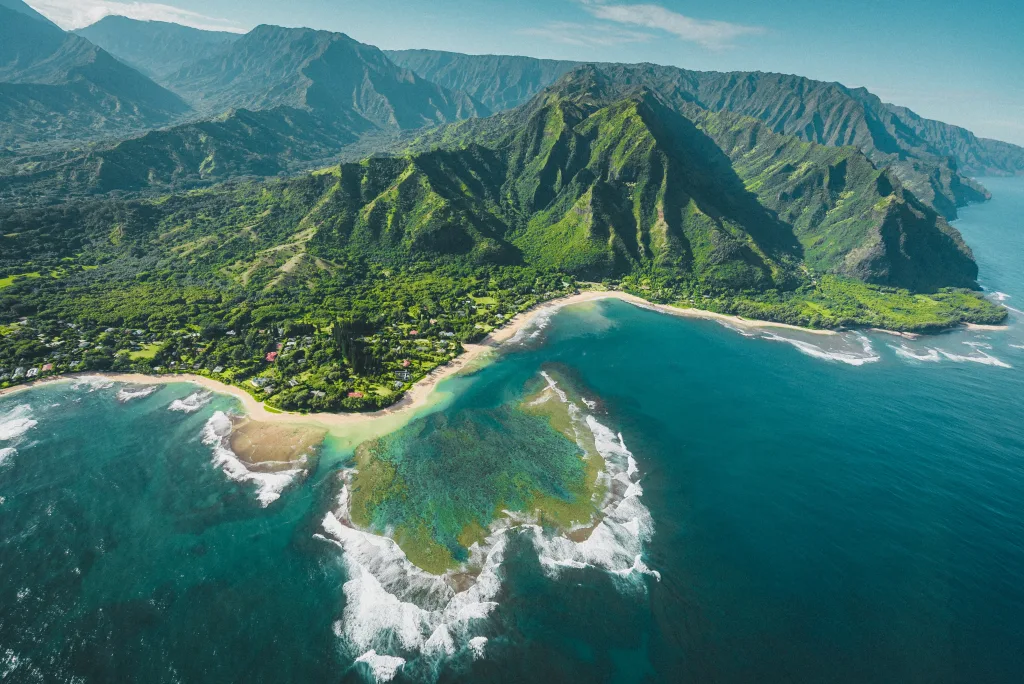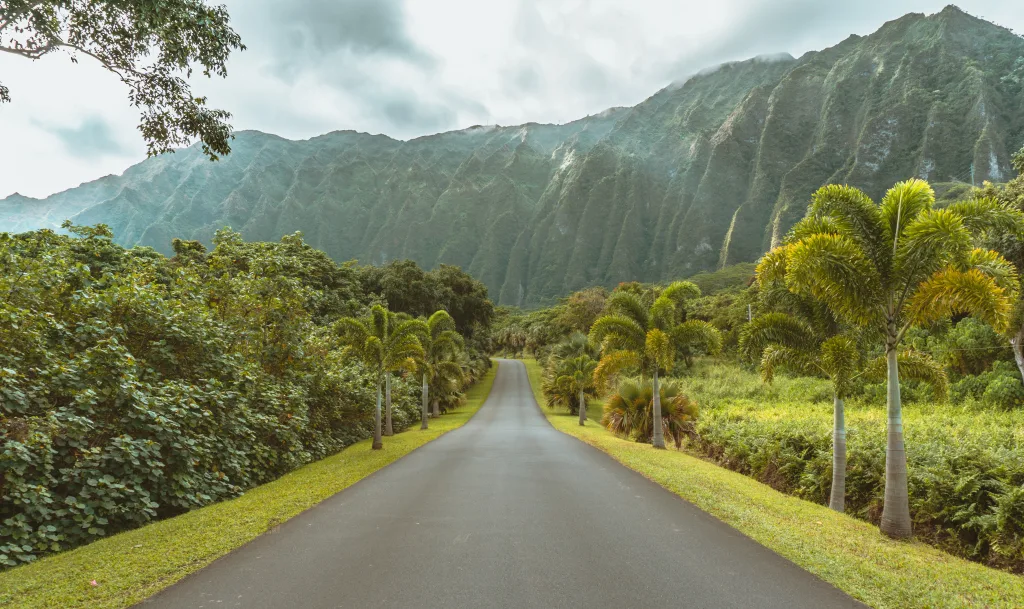The Kingdom of Hawaii, also known as the Hawaiian Kingdom, was a sovereign nation that existed from 1810 until its overthrow in 1893. Before the United States took control of Hawaii, the islands were ruled by a monarchy, with a long and rich history that dates back to ancient Polynesians.
The Polynesians were the first to settle in the Hawaiian Islands, arriving sometime between 124 and 1120 AD. These early settlers, believed to have come from the Marquesas Islands, brought with them their unique culture and language. They established a thriving civilization and lived in relative isolation for centuries.
The Hawaiian Kingdom was officially established in 1810 by King Kamehameha I, who united the various islands under his rule. Kamehameha’s leadership brought stability and prosperity to the islands, and his dynasty continued to rule over the kingdom for several generations.
During the 19th century, Hawaii became an important hub for trade and commerce, attracting foreign merchants and settlers. The arrival of Western influences, particularly from the United States, had a significant impact on the kingdom. Missionaries from the United States introduced Christianity to the islands and played a role in shaping Hawaiian society.
In 1893, a group of American businessmen and politicians, with the support of the United States government, orchestrated the overthrow of the Hawaiian monarchy. Queen Liliuokalani, the last reigning monarch, was deposed and a provisional government was established. This marked the beginning of a tumultuous period for Hawaii, as it transitioned from a sovereign nation to a U.S. territory.
The annexation of Hawaii by the United States was formalized through the Newlands Resolution, signed into law by President William McKinley on July 7, 1898. The U.S. military saw Hawaii as a strategic location in the Pacific and feared potential Japanese occupation of the islands. The sugar trade also played a significant role in the decision to annex Hawaii, as American business interests sought to maintain control over the lucrative industry.
With the annexation, Hawaii became a territory of the United States, and Sanford Dole became the first Governor of the Territory of Hawaii. The islands experienced rapid changes as they became more integrated into the American political and economic system.
The Kingdom of Hawaii was ruled by a monarchy before the United States took control of the islands. The Polynesians were the original settlers, and their civilization thrived for centuries before Western influences began to shape Hawaiian society. The annexation of Hawaii by the United States in 1898 marked a significant turning point in the history of the islands, leading to their eventual statehood in 1959. The complex and multifaceted history of Hawaii continues to be studied and explored to this day.
Who Originally Owned The Hawaiian Islands?
The Hawaiian Islands were originally owned by the Polynesians. These islands were settled by Polynesians, who arrived sometime between 124 and 1120 AD. The Polynesians were the first inhabitants of the islands and established their civilization there. For at least 500 years, Hawaiian civilization remained isolated from the rest of the world. During this time, the Polynesians developed their own unique culture, traditions, and way of life on the islands. It wasn’t until later that Western influence and colonization began to shape the history of the Hawaiian Islands.

Who Colonized Hawaii Before America?
Before America, the Hawaiian Islands were colonized by Polynesians. These early settlers were believed to have arrived in Hawaii around 400 C.E. They came from the Marquesas Islands, which are located about 2000 miles away from Hawaii’s Big Island.
The Polynesians who colonized Hawaii were skilled navigators and used canoes to make their way across the vast Pacific Ocean. They were able to navigate using the stars, winds, and other natural signs, allowing them to successfully reach the Hawaiian Islands.
The colonization of Hawaii by the Polynesians had a significant impact on the islands’ culture, language, and traditions. They brought with them their own customs and practices, which blended with the existing environment and eventually developed into the unique Hawaiian culture that we know today.
It is important to note that the colonization of Hawaii by the Polynesians predates the arrival of Europeans, including the Americans, by several centuries. The Polynesian settlers established a thriving society in Hawaii long before any contact with the Western world.
Why Did The U.S. Buy Hawaii From?
The United States purchased Hawaii primarily due to a combination of economic and strategic interests. Here are the key reasons behind this acquisition:
1. Economic Importance:
– Hawaii had a thriving sugar industry, which was highly profitable for American businessmen. The U.S. wanted to ensure a steady supply of sugar for its growing market.
– American plantation owners on the islands sought annexation to gain access to the lucrative American market without facing import tariffs.
2. Strategic Significance:
– The U.S. saw Hawaii as a crucial strategic location in the Pacific Ocean. Its central position made it an ideal site for a naval base to project American power across the region.
– Naval leaders feared potential Japanese aggression and viewed Hawaii as a critical outpost to counter any Japanese expansion in the Pacific.
3. Protecting American Interests:
– With the increasing presence of Japanese laborers in Hawaii’s sugar industry, American military leaders worried about the potential for Japanese occupation of the islands.
– Annexing Hawaii was seen as a way to safeguard American interests and prevent a potential Japanese threat from gaining a foothold in the Pacific.
4. Manifest Destiny and Imperialism:
– The annexation of Hawaii aligned with the ideology of Manifest Destiny, the belief that the United States was destined to expand its territory.
– This era was marked by American imperialism, where the U.S. sought to assert its dominance and influence over other nations.
The U.S. bought Hawaii primarily to secure economic advantages from the sugar trade and establish a strategic naval base in the Pacific. The perceived threat of Japanese invasion further fueled the desire for annexation.
Who Gave Hawaii To The United States?
The United States acquired Hawaii through the Newlands Resolution, a legislative act that was passed by Congress and signed into law by President McKinley on July 7, 1898. The resolution officially annexed the Hawaiian islands and made them a part of the United States. The person who played a significant role in this process was Sanford Dole, who became the first Governor of the newly established Territory of Hawaii. President McKinley appointed Dole to this position, and he played a crucial role in facilitating the annexation of Hawaii by the United States.

Conclusion
The Kingdom of Hawaii has a rich and complex history. It began with the settlement of Polynesians in the islands, who established a thriving civilization that remained isolated from the rest of the world for centuries. However, in the late 19th century, the United States saw the strategic importance of Hawaii and sought to annex the islands. This was achieved through the Newlands Resolution in 1898, making Hawaii an official territory of the United States.
The annexation of Hawaii was driven by a combination of factors, including the desire to protect against potential Japanese occupation and the economic opportunities presented by the sugar trade. Waves of Japanese immigrants came to the islands to work in the sugar industry, further shaping the cultural landscape of Hawaii.
The annexation of Hawaii marked a significant turning point in its history, as it became an integral part of the United States. Despite this, the legacy of the Kingdom of Hawaii and its indigenous Polynesian culture still resonate on the islands today. The rich traditions, language, and customs of the Hawaiian people continue to be celebrated and preserved, making Hawaii a unique and vibrant part of the United States.
